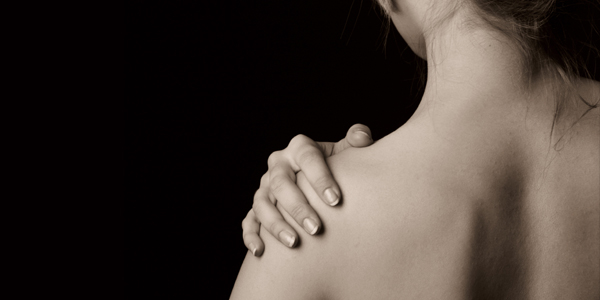Reduce your arthritis pain
According to the Arthritis Foundation, at least one in five adults in America suffers from some form of arthritis. Half of these people believe nothing can be done to relieve their pain and discomfort, but there are steps that can help. Even though there are a number of different types of arthritis-related conditions, a healthy lifestyle can be a key defense in managing the aches and pains.

In general, pain is your body's way of telling you that something is wrong. When you have arthritis, pain can be caused by inflammation of your joints or damage to your joint tissues. The physical damage is often affected by fatigue, stress or depression. Your body's reaction to pain depends on the severity of the arthritis and the sensitivity of your nervous system. However, emotional side effects are common, regardless of severity or sensitivity. Some things that make pain feel worse include stress (both physical and mental), overexertion, focusing on the pain, fatigue, anxiety and depression.
Osteoarthritis: The most common form of arthritis is called osteoarthritis. It occurs when the cartilage that is meant to protect joints deteriorates and causes bone to rub against bone.
Rheumatoid arthritis: Rheumatoid arthritis is the most serious and debilitating of the arthritis conditions. It is an autoimmune disease in which the joint lining is inflamed due to the body's autoimmune response. It is most prevalent among women.
Gout: A more curable form of arthritis is called gout. It is caused by a defect in body chemistry and usually affects smaller joints. It is more prevalent among men.
Ankylosing spondylitis: This is an arthritis condition that affects the spine. Ankylosing spondylitis occurs when the bones of the spine grow together due to inflammation.
Systemic lupus erythematosus: More commonly known as lupus, this disease is characterized by the inflammation of joints and other connective tissue throughout the body.
Scleroderma: The arthritis condition termed scleroderma affects the connective tissue and causes the skin to thicken or harden.
Fibromyalgia: This is an arthritis condition characterized by damage to the muscles and attachments to the bone. Fibromyalgia is also most commonly found in women.
Juvenile arthritis: Adults are not the only ones affected by arthritis. Arthritis conditions that affect children are grouped under the label juvenile arthritis.
Diet: A given is to eat healthy foods in healthy portions. Eat in a way that guarantees you get all your nutrients, particularly with foods that have anti-inflammatory properties. Omega-3 essential fatty acids are powerful anti-inflammatory agents found in cold water oily fish, walnuts, flax seeds, flax meal, canola oil, olive oil and pumpkin seeds. In addition, eat foods rich in antioxidants, such as fresh fruits and vegetables.
Another key in diet is maintaining a healthy weight. Extra weight causes stress on your joints and, therefore, causes more pain.
Exercise: The myth that exercise damages joints has been revoked. The new philosophy is that exercise reduces joint pain and stiffness and builds muscle around the joints. It can also increase flexibility and endurance. Exercise naturally benefits other parts of life as well, such as providing better sleep, more energy and weight maintenance.
reduces joint pain and stiffness and builds muscle around the joints. It can also increase flexibility and endurance. Exercise naturally benefits other parts of life as well, such as providing better sleep, more energy and weight maintenance.
Though exercise has its benefits, don't go overboard. The first thing to remember when beginning an exercise program is to start slow. Stretching and flexibility exercises like yoga will develop into strength and endurance exercises such as biking or lifting free weights. Water exercises are a good place to start because your body's buoyancy in water decreases stress on your hips, knees and spine. As always, consult your doctor or physical therapist before creating your own exercise regime.
Hair Removal tips for Girls
Beauty Tips in Urdu
Top Ten Cars
Reducing your pain can be accomplished through a variety of lifestyle adjustments. Here are just a few to make living with arthritis less debilitating.
Stay physically active. Make daily exercise a priority but also make sure you don't sit still for long periods of time. Simply getting up and changing positions every hour can lessen your pain and reduce stiffness.
Use your dominant, unaffected muscles and joints for simple tasks. For example, instead of pushing a door open with your hand and wrist affected by arthritis, use your shoulder to push.
Avoid tasks that put unnecessary stress on your joints. Getting on your hands and knees to clean the kitchen floor can exacerbate pains in the joints of both your upper and lower body. Invest in tools designed to assist people with arthritis.
Ask for help. If you are having trouble opening that peanut butter jar, ask someone to do it for you – then make sure the lid is put back on a little bit looser.
Arthritis is a painful disease that encompasses more than 100 different diseases that affect areas around joints. Though these tips won't cure arthritis, they will help ease the pain and make life more enjoyable. Remember, it is important to consult with a doctor before taking on any complementary therapies. A combination of doctor prescribed medication and good health practices can contribute to a much more mobile and joyful life.

ARTHRITIS PAIN
In general, pain is your body's way of telling you that something is wrong. When you have arthritis, pain can be caused by inflammation of your joints or damage to your joint tissues. The physical damage is often affected by fatigue, stress or depression. Your body's reaction to pain depends on the severity of the arthritis and the sensitivity of your nervous system. However, emotional side effects are common, regardless of severity or sensitivity. Some things that make pain feel worse include stress (both physical and mental), overexertion, focusing on the pain, fatigue, anxiety and depression.
TYPES OF ARTHRITIS
Here is a list of different types of arthritis. Visit the Arthritis Foundation Disease Center for more detailed descriptions. And before you self-diagnose, consult with your doctor if you think you might be suffering from an arthritis condition.Osteoarthritis: The most common form of arthritis is called osteoarthritis. It occurs when the cartilage that is meant to protect joints deteriorates and causes bone to rub against bone.
Rheumatoid arthritis: Rheumatoid arthritis is the most serious and debilitating of the arthritis conditions. It is an autoimmune disease in which the joint lining is inflamed due to the body's autoimmune response. It is most prevalent among women.
Gout: A more curable form of arthritis is called gout. It is caused by a defect in body chemistry and usually affects smaller joints. It is more prevalent among men.
Ankylosing spondylitis: This is an arthritis condition that affects the spine. Ankylosing spondylitis occurs when the bones of the spine grow together due to inflammation.
Systemic lupus erythematosus: More commonly known as lupus, this disease is characterized by the inflammation of joints and other connective tissue throughout the body.
Scleroderma: The arthritis condition termed scleroderma affects the connective tissue and causes the skin to thicken or harden.
Fibromyalgia: This is an arthritis condition characterized by damage to the muscles and attachments to the bone. Fibromyalgia is also most commonly found in women.
Juvenile arthritis: Adults are not the only ones affected by arthritis. Arthritis conditions that affect children are grouped under the label juvenile arthritis.
TREATMENT FOR ARTHRITIS
While prescribed medication can reduce pain and inflammation, complementary treatment with diet and exercise can also make a beneficial difference.Diet: A given is to eat healthy foods in healthy portions. Eat in a way that guarantees you get all your nutrients, particularly with foods that have anti-inflammatory properties. Omega-3 essential fatty acids are powerful anti-inflammatory agents found in cold water oily fish, walnuts, flax seeds, flax meal, canola oil, olive oil and pumpkin seeds. In addition, eat foods rich in antioxidants, such as fresh fruits and vegetables.
Another key in diet is maintaining a healthy weight. Extra weight causes stress on your joints and, therefore, causes more pain.
Exercise: The myth that exercise damages joints has been revoked. The new philosophy is that exercise
 reduces joint pain and stiffness and builds muscle around the joints. It can also increase flexibility and endurance. Exercise naturally benefits other parts of life as well, such as providing better sleep, more energy and weight maintenance.
reduces joint pain and stiffness and builds muscle around the joints. It can also increase flexibility and endurance. Exercise naturally benefits other parts of life as well, such as providing better sleep, more energy and weight maintenance. Though exercise has its benefits, don't go overboard. The first thing to remember when beginning an exercise program is to start slow. Stretching and flexibility exercises like yoga will develop into strength and endurance exercises such as biking or lifting free weights. Water exercises are a good place to start because your body's buoyancy in water decreases stress on your hips, knees and spine. As always, consult your doctor or physical therapist before creating your own exercise regime.
EVERYDAY ADJUSTMENTS
Hair Removal tips for Girls
Beauty Tips in Urdu
Top Ten Cars
Reducing your pain can be accomplished through a variety of lifestyle adjustments. Here are just a few to make living with arthritis less debilitating.
Stay physically active. Make daily exercise a priority but also make sure you don't sit still for long periods of time. Simply getting up and changing positions every hour can lessen your pain and reduce stiffness.
Use your dominant, unaffected muscles and joints for simple tasks. For example, instead of pushing a door open with your hand and wrist affected by arthritis, use your shoulder to push.
Avoid tasks that put unnecessary stress on your joints. Getting on your hands and knees to clean the kitchen floor can exacerbate pains in the joints of both your upper and lower body. Invest in tools designed to assist people with arthritis.
Ask for help. If you are having trouble opening that peanut butter jar, ask someone to do it for you – then make sure the lid is put back on a little bit looser.
Arthritis is a painful disease that encompasses more than 100 different diseases that affect areas around joints. Though these tips won't cure arthritis, they will help ease the pain and make life more enjoyable. Remember, it is important to consult with a doctor before taking on any complementary therapies. A combination of doctor prescribed medication and good health practices can contribute to a much more mobile and joyful life.
Source...
